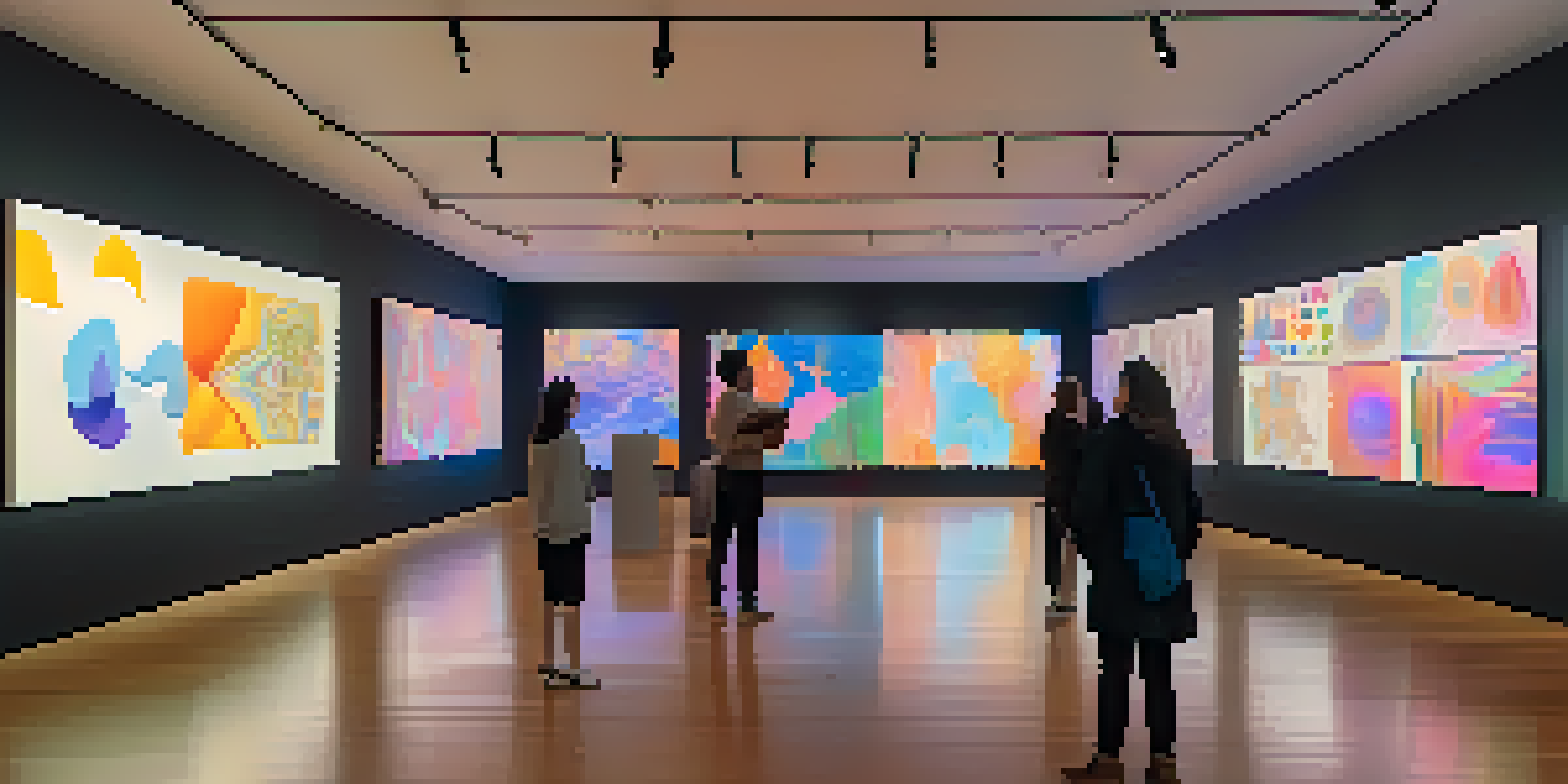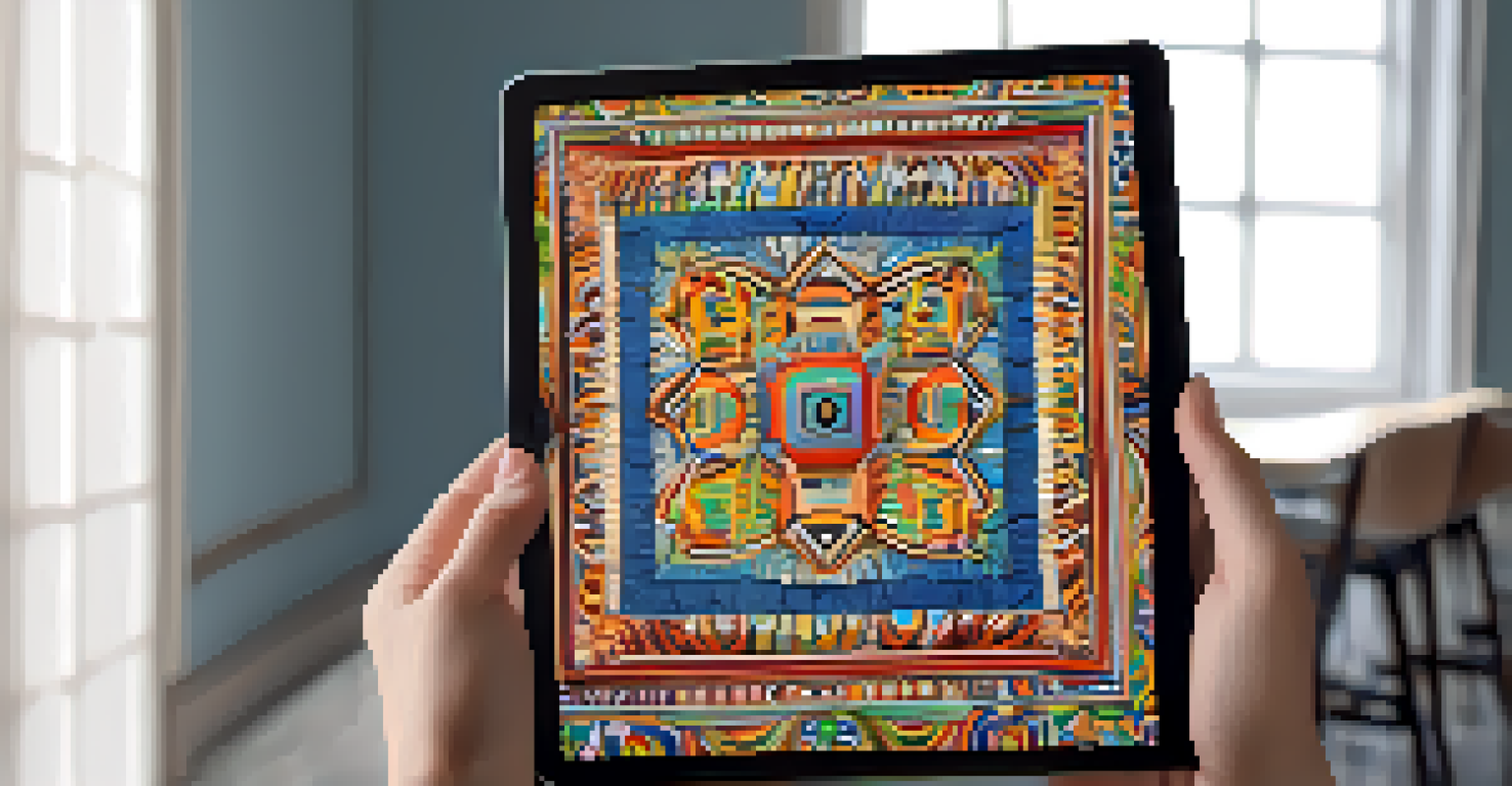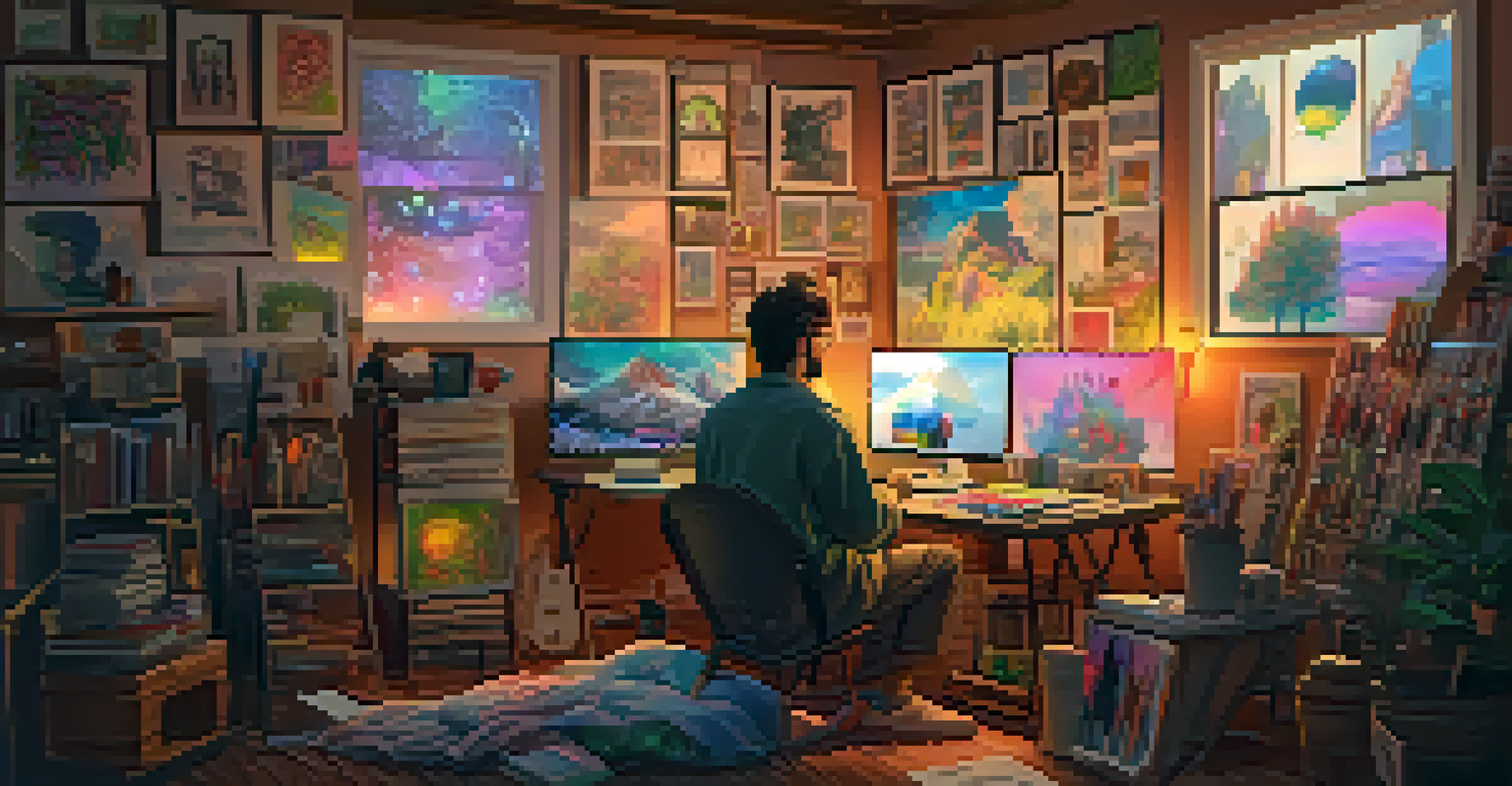The Future of Cultural Heritage: NFTs as Digital Custodians

Understanding NFTs and Their Role in Cultural Heritage
Non-fungible tokens, or NFTs, are unique digital assets verified using blockchain technology. Unlike traditional cryptocurrencies, which are interchangeable, each NFT holds distinct information, making it one-of-a-kind. This uniqueness is crucial when discussing cultural heritage, as it allows for authentic representation of artifacts, artworks, and historical documents in the digital realm.
The future of cultural heritage is not just about preservation but also about innovation and accessibility.
By converting cultural items into NFTs, institutions can provide a secure and verifiable way to showcase their collections. This not only aids in preserving the digital format of these items but also enhances accessibility for people around the world. Imagine being able to view a rare painting from the comfort of your home, thanks to the power of NFTs.
However, the conversation doesn't stop at accessibility. NFTs also foster a sense of ownership and engagement with cultural heritage, encouraging individuals to take part in preserving history. This blend of technology and tradition holds exciting potential for the future of how we interact with our past.
The Benefits of NFTs in Cultural Preservation
One of the standout benefits of NFTs is their ability to provide provenance, or the history of ownership, for cultural artifacts. This is essential for museums and collectors who want to prove authenticity and protect against forgery. By digitally recording the history of an item on a blockchain, NFTs create a tamper-proof record that adds value and security.

Additionally, NFTs can help generate revenue for cultural institutions. When an NFT of a piece of art is sold, a portion of that sale can go back to the institution, allowing them to fund future projects and preservation efforts. This creates a sustainable model where cultural heritage can thrive in both the digital and physical realms.
NFTs Enhance Cultural Accessibility
By digitizing cultural items as NFTs, institutions can provide secure access to rare artifacts and artworks for a global audience.
Moreover, NFTs encourage global collaboration among artists, historians, and institutions. By sharing digital collectibles, people can come together to celebrate and protect cultural diversity. This not only enriches our understanding of different cultures but also promotes inclusivity in the arts.
Challenges Facing the Adoption of NFTs
Despite their potential, the adoption of NFTs in cultural heritage isn't without challenges. One major concern is the environmental impact associated with blockchain technology. The energy consumption required for minting NFTs can contribute to carbon emissions, raising questions about sustainability in preservation efforts.
Art is not what you see, but what you make others see.
Furthermore, the digital divide may limit who can access and benefit from NFTs. While many people are becoming more tech-savvy, there are still communities without reliable internet access or the resources to engage with digital assets. This highlights the need for equitable solutions that ensure everyone can participate in preserving cultural heritage.
Lastly, there’s a risk of commercialization overshadowing the artistic and historical value of cultural artifacts. As NFTs become a trend, it’s crucial to maintain a balance between profit and preservation, ensuring that the true essence of cultural heritage remains intact.
Case Studies: Successful NFT Implementations
Several museums and cultural institutions have already begun embracing NFTs to showcase their collections. For instance, the British Museum launched a series of NFT artworks representing various pieces from their collection, allowing global audiences to engage with history in a new way. This initiative not only garnered attention but also sparked conversations about the future of art and preservation.
Another notable example is the Uffizi Gallery in Florence, which released NFTs of famous artworks, including Botticelli's 'The Birth of Venus.' By doing so, they not only celebrated the original pieces but also created a new revenue stream for their ongoing preservation efforts. The excitement around these projects demonstrates the potential for NFTs to bridge the gap between art and technology.
Provenance and Revenue Generation
NFTs offer a tamper-proof record of ownership, ensuring authenticity and creating new revenue streams for cultural institutions.
These case studies highlight the innovative approaches institutions can take to connect with audiences while safeguarding cultural heritage. As more organizations experiment with NFTs, we can expect to see a growing body of work that inspires others to follow suit.
The Role of Artists in the NFT Landscape
Artists play a pivotal role in the NFT space, as they are often the creators of the digital assets that embody cultural heritage. By minting their work as NFTs, artists can assert their ownership and control over their creations, which can lead to fair compensation and recognition. This shift empowers artists in ways that traditional art markets often fail to do.
Moreover, NFTs allow artists to tell their stories and share their cultural influences with a global audience. This opens doors for diverse voices to be heard and appreciated, enriching the cultural tapestry of our society. Imagine an artist from a remote village sharing their unique perspective through digital art; NFTs provide the platform to do just that.
As artists continue to explore the possibilities of NFTs, they can also collaborate with cultural institutions to create projects that highlight their heritage. This synergy fosters a richer understanding of culture and allows for innovative expressions that resonate with contemporary audiences.
Future Trends in NFTs and Cultural Heritage
Looking ahead, the intersection of NFTs and cultural heritage is likely to evolve in fascinating ways. As technology continues to advance, we might see improved platforms that enhance user experience, making it easier for individuals to engage with cultural collections. This could include virtual reality exhibitions that transport viewers to historical sites or interactive experiences that deepen understanding.
Moreover, as the conversation around sustainability grows, there will be a push for greener blockchain technologies. Solutions that minimize environmental impact while maintaining security could pave the way for more widespread NFT adoption in cultural heritage. This shift not only addresses concerns but also aligns with broader conservation efforts.
Challenges of NFT Adoption
Despite their benefits, NFTs face challenges like environmental concerns, the digital divide, and the risk of commercialization overshadowing cultural value.
Finally, we can anticipate an increase in collaboration between artists, museums, and tech developers. By working together, these stakeholders can create innovative projects that celebrate cultural heritage while leveraging the benefits of NFTs. This collaboration will likely usher in a new era of cultural engagement that values both tradition and innovation.
Conclusion: Embracing NFTs for Cultural Preservation
In conclusion, NFTs have the potential to revolutionize how we preserve and engage with cultural heritage. By providing a secure and verifiable way to showcase artifacts, NFTs open up new avenues for accessibility, revenue generation, and global collaboration. As we navigate the challenges and opportunities ahead, it’s vital to prioritize sustainability and inclusivity in our approach.
The journey of integrating NFTs into cultural heritage is just beginning, and there’s much to learn from the successes and setbacks along the way. By fostering dialogue among artists, institutions, and audiences, we can ensure that the essence of our cultural heritage remains intact while embracing the possibilities of the digital age.

Ultimately, the future of cultural heritage lies in our ability to adapt and innovate. As we explore the potential of NFTs, we must remain committed to preserving the richness of our past for generations to come.